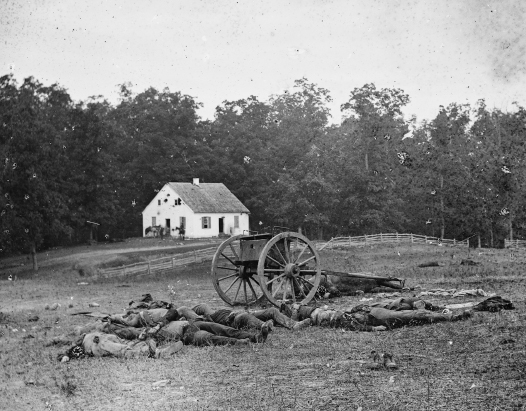How did each side fare in the early years of the war?
Printed Page 431

Figure false: The Dead of Antietam
Figure false: In October 1862, photographer Mathew Brady opened an exhibition that presented the battle of Antietam as the soldiers saw it. A New York Times reporter observed: “Mr. Brady has done something to bring to us the terrible reality and earnestness of the war. If he has not brought bodies and laid them in our door-yards and along [our] streets, he had done something very like it.” Library of Congress.
DURING THE FIRST YEAR and a half of the war, armies fought major campaigns in both the East and the West. While the eastern campaign was more dramatic, Lincoln had trouble finding a capable general, and the fighting ended in a stalemate. Battles in the West proved more decisive. Union general Ulysses S. Grant won important victories in Kentucky and Tennessee. As Yankee and rebel armies pounded each other on land, the navies fought on the seas and on the rivers of the South. In Europe, Confederate and U.S. diplomats competed for advantage in the corridors of power. All the while, casualty lists on both sides reached appalling lengths.
CHRONOLOGY
1861
- – First battle of Bull Run (Manassas).
1862
- – Grant captures Fort Henry and Fort Donelson.
- – Battle of Glorieta Pass.
- – Battle of Pea Ridge.
- – Battle of Shiloh.
- – Virginia peninsula campaign.
- – Battle of Antietam.
- – Battle of Fredericksburg.